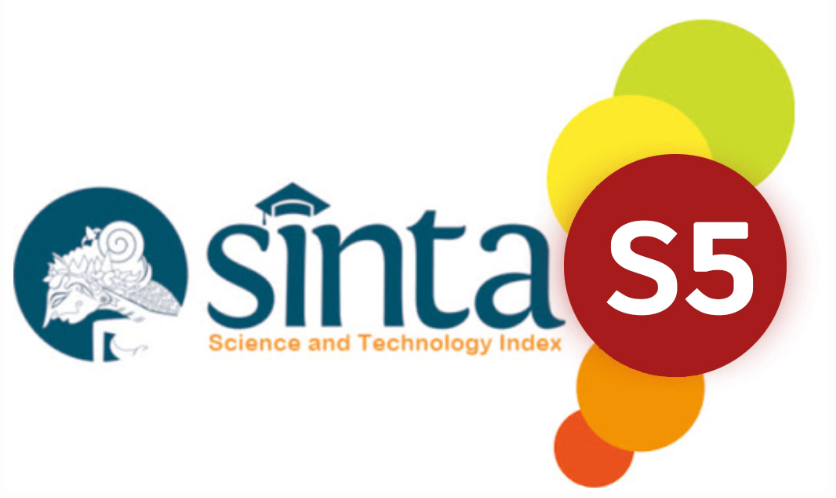The Relationship Between Body Mass Index (BMI) and the Occurrence of Gastroesophageal Reflux Disease (GERD) Among Students of the Faculty of Medicine, Universitas Sumatera Utara, Batch of 2021 and 2022
DOI:
https://doi.org/10.32734/sumej.v8i2.19071Keywords:
body mass index, chi-square, GERD, GERD-QAbstract
Background: Gastroesophageal Reflux Disease (GERD) is a common digestive disorder, especially among young adults like college students. One factor linked to GERD is Body Mass Index (BMI). Although higher BMI is associated with a greater risk of GERD, limited data exists on this relationship in university populations, particularly at the Faculty of Medicine, Universitas Sumatera Utara. Objective: This study aims to analyze the relationship between BMI and GERD incidence in FK USU students from the 2021 and 2022 batches. Methods: An analytical, cross-sectional study was conducted using simple random sampling. The subjects were Medical Education students from the 2021 and 2022 batches. Data collection was done through direct distribution of the GERD-Q questionnaire. Statistical analysis included univariate and bivariate methods using chi-square tests. Results: Among 100 respondents, 52 (52.0%) had GERD. Among those with GERD, 43 (29.6%) were obese and 9 (22.4%) had normal BMI. Of those without GERD, 34 (20.6%) had normal BMI and 14 (27.4%) were obese. A significant relationship was found between BMI and GERD (p = 0.011). Conclusion: There is a significant relationship between BMI and GERD incidence among FK USU Medical Faculty students from the 2021–2022 batches.
Downloads
References
Vaishnav B, Bamanikar A, Maske P, Reddy A, Dasgupta S. Gastroesophageal reflux disease and its association with body mass index: Clinical and endoscopic study. J Clin Diagn Res. 2017;11(4):OC01–4. Available from: https://doi.org/10.7860/JCDR/2017/24151.9562.
Saputera MD, Budianto W. Diagnosis dan tatalaksana gastroesophageal reflux disease (GERD) di pusat pelayanan kesehatan primer. Cont Med Educ CDK. 2017;44(5):329–32.
Lee DP, Chang KJ. Endoscopic management of GERD. Dig Dis Sci. 2022;67(5):1455–68. Available from: https://doi.org/10.1007/s10620-022-07390-2.
Makmun D, Fauzi A, Maulahela H, Pribadi RR. Konsensus nasional penatalaksanaan penyakit refluks (gastroesophageal reflux disease/GERD) di Indonesia 2022. Pipiinterna. 2022:1–80.
Cheng J, Ouwehand AC. Gastroesophageal reflux disease and probiotics: A systematic review. Nutrients. 2020;12(1):1–15. Available from: https://doi.org/10.3390/nu12010132.
Karimian M, et al. Epidemiology of gastroesophageal reflux disease in Iran: A systematic review and meta-analysis. BMC Gastroenterol. 2020;20(1). Available from: https://doi.org/10.1186/s12876-020-01417-6.
Srihartini I, et al. Evaluasi penggunaan obat pada pasien GERD rawat jalan di Rumah Sakit Bhayangkara Kediri. Eval Drug Use Outpatient GERD Patients Bhayangkara Kediri Hosp. 2024:15.
Bray GA. Beyond BMI. Nutrients. 2023;15(10):2254. Available from: https://doi.org/10.3390/nu15102254.
Sharma P, Yadlapati R. Pathophysiology and treatment options for gastroesophageal reflux disease: Looking beyond acid. Ann N Y Acad Sci. 2021;1486(1):3–14. Available from: https://doi.org/10.1111/nyas.14501.
James W, et al. Indeks massa tubuh. In: Andrew’s Disease of the Skin: Clinical Dermatology. 2020.
Haufs MG, Zöllner YF. Fehleinschätzungen selbstberichteter Body-Mass-Index-Kategorien. Dtsch Arztebl Int. 2020;117(39):659. Available from: https://doi.org/10.3238/arztebl.2020.0659a.
Khanna D, et al. Body mass index (BMI): A screening tool analysis. Cureus. 2022. Available from: https://doi.org/10.7759/cureus.22119.
Hidayati PH, et al. Hubungan body mass index (BMI) terhadap kejadian gastroesophageal reflux disease (GERD). 2022.
Sakti PT, Mustika S. Analisis faktor risiko gastro-esophageal reflux disease di era pandemi COVID-19 pada mahasiswa program pendidikan dokter spesialis Fakultas Kedokteran Universitas Brawijaya. J Penyakit Dalam Indones. 2022;9(3):164. Available from: https://doi.org/10.7454/jpdi.v9i3.793.
Leiman DA, Metz DC. Gastroesophageal reflux disease. Clin Gastrointest Endosc. 2019:268–78. Available from: https://doi.org/10.1016/B978-0-323-41509-5.00024-4.
James W, Elston D, Berger TJ, et al. Indeks massa tubuh. In: Andrew’s Disease of the Skin: Clinical Dermatology. 2020.
Purthana NHS, Somayana G. Hubungan antara berat badan lebih dengan penyakit refluks gastroesofageal di RSUP Sanglah Denpasar periode Juli – Desember 2018. J Medika Udayana. 2020;9(6):30–4.
Baklola M, et al. Prevalence of gastro-oesophageal reflux disease, and its associated risk factors among medical students: A nation-based cross-sectional study. BMC Gastroenterol. 2023;23(1):269. Available from: https://doi.org/10.1186/s12876-023-02899-w.
Kim YS, Kim N, Kim GH. Sex and gender differences in gastroesophageal reflux disease. J Neurogastroenterol Motil. 2016;22(4):575–88. Available from: https://doi.org/10.5056/jnm16138.4o.
Kim SY, et al. Gender specific differences in prevalence and risk factors for gastro-esophageal reflux disease. J Korean Med Sci. 2019;34(21). Available from: https://doi.org/10.3346/jkms.2019.34.e158.
Savarino E, Bredenoord AJ, Fox M, Pandolfino JE, Roman S, Gyawali CP. Advances in the physiological assessment and diagnosis of GERD. Nat Rev Gastroenterol Hepatol. 2017;14(11):665–76. Available from: https://doi.org/10.1038/nrgastro.2017.130.
Nirwan JS, Hasan SS, Babar ZUD, Seah RH, Goh KL. Prevalence and factors associated with gastro-oesophageal reflux disease (GERD) in the adult population: a systematic review and meta-analysis. Dis Esophagus. 2020;33(1). Available from: https://doi.org/10.1093/dote/doz072.
Downloads
Published
How to Cite
Issue
Section
License
Copyright (c) 2025 Sumatera Medical Journal

This work is licensed under a Creative Commons Attribution-ShareAlike 4.0 International License.
The Authors submitting a manuscript do so on the understanding that if accepted for publication, copyright of the article shall be assigned to Sumatera Medical Journal (SUMEJ) and Faculty of Medicine as well as TALENTA Publisher Universitas Sumatera Utara as publisher of the journal.
Copyright encompasses exclusive rights to reproduce and deliver the article in all form and media. The reproduction of any part of this journal, its storage in databases and its transmission by any form or media, will be allowed only with a written permission from Sumatera Medical Journal (SUMEJ).
The Copyright Transfer Form can be downloaded here.
The copyright form should be signed originally and sent to the Editorial Office in the form of original mail or scanned document.











